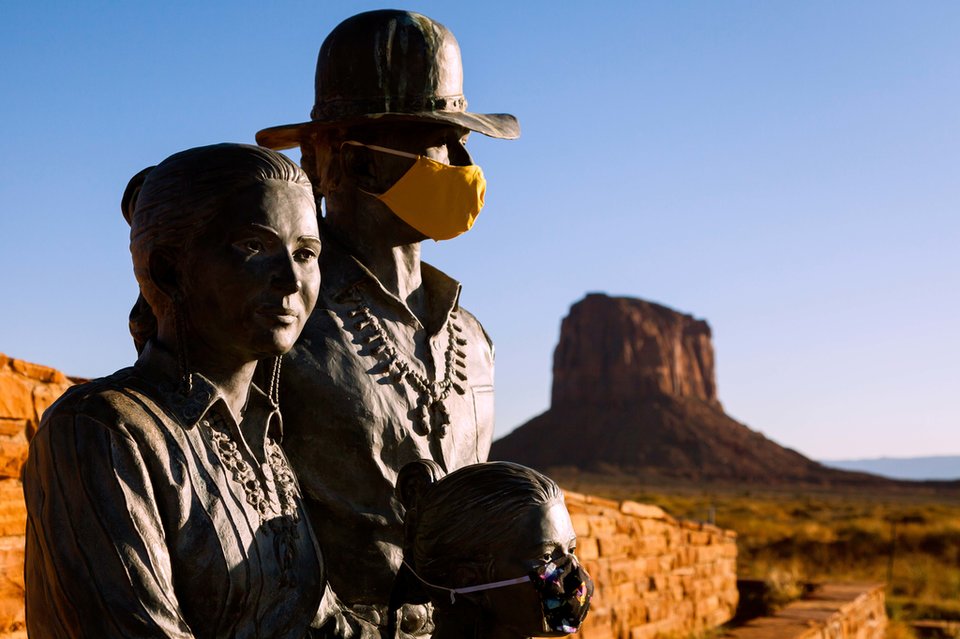
Regional Focus
The legacy of uranium mining in the Navajo Nation
Earlier this year, residents of the Navajo Nation filed a case with the Inter-American Commission on Human Rights regarding the disastrous impacts of uranium mining in the region. Zachary Skidmore examines the filing and the legacy of abandoned mining operations.
A
group representing Navajo communities has presented its case to the Inter-American Commission on Human Rights. The case filing claims that the US Government failed to protect the human rights of the residents of Crownpoint and Church Rock, Navajo Nation, New Mexico.
Filed by the Eastern Navajo Diné Against Uranium Mining (ENDAUM) and the New Mexico Environmental Law Center (NMELC), the filling stressed a legacy of negligence by the uranium mining industry, which operated within the region from 1944-1986. It asserted that US regulators violated the rights of tribal members by permitting uranium mining in New Mexico.
To this day, several mining companies still hold rights to operate within the region, despite the fact that uranium mining has been banned on Navajo land since 2005. The filing focuses predominantly on the licenses held by Laramide Resources in the towns of Crownpoint and Church Rock. It calls for the federal government to revoke, rather than renew, these licenses to provide the Navajo people the opportunity to live without the constant fear of the uranium mining’s return.
The case evokes a larger question of mining’s disproportionate impact upon indigenous and minority communities and the legacy of abandoned mines. Whether this case will succeed in protecting Navajo land from uranium miners is still up for debate.
The recent success of a case that pressured Rio Tinto into agreeing to an environmental assessment of the Paguna mine offers some hope. Made by the Human Rights Law Centre on behalf of the community of Bougainville, the case also unfortunately demonstrates the lengths to which communities must go to bring mining companies to heed the often-disastrous legacy of their operations.
Uranium mining and the Navajo Nation
The uranium mining industry has a very checkered history. Due to its radioactive properties, the mining and processing of the metal poses a high risk of contaminating the surrounding environment.
Most of the world’s uranium mines use a process called in-situ leaching, which involves pumping a cocktail of acids or bicarbonates mixed with groundwater to dissolve uranium in an aquifer for easier extraction. This solution is then pumped to the surface and discharged for processing. This method poses severe risks in radon emission, windblown dust dispersal, and leaching of contaminants, including arsenic, into groundwater reserves.
Exposure can have disastrous health impacts, with recent research finding that residents living within half a mile of abandoned uranium mines experience a significantly increased risk of kidney disease, diabetes, hypertension, and auto-immune disease. This is complicated further as the adverse effects are disproportionately felt by low income and minority communities.
In the US, the impacts of uranium mining have been most felt within the indigenous population, especially the Navajo Nation in New Mexico. From 1944-1986 the US extracted four million tonnes of uranium ore from and left 500 abandoned mines in native Navajo territories.
The situation is further complicated as, on the Navajo Nation, most uranium deposits sit in aquifers, on which the local community relies for water. Drilling into these aquifers can cause radioactive uranium to leach into the water, contaminating both the underground supply and the water absorbed from the surface.
Water will determine our survival as a people beginning now and into the future, especially with climate change.
Christine Smith, a member of ENDAUM, highlighted the risks, saying: “Water will determine our survival as a people beginning now and into the future, especially with climate change, so we all collectively become protectors of what sustains us.”
The Environmental Protection Agency has entered into enforcement agreements and settlements valued at over $1.7bn to reduce the highest risks of radiation exposure, with funds available to begin the assessment and cleanup process at 230 of the 523 abandoned uranium mines.
However, to this day, no mining company has thoroughly cleaned an aquifer it polluted with in-situ leach mining. Therefore, despite the funds being released, it seems unlikely that Navajo land will experience a full-scale clean up and with mining permits still valid, the risk of further uranium operations is clear and present.
New projects and legal responses
Since 1994, ENDAUM has been fighting proposed uranium mining in their communities of Crownpoint and Church Rock. New concerns arose after Canadian mining company Laramide Resources, which, through its US subsidiary NuFuels, holds a federal mining license for Crownpoint and nearby Church Rock, demonstrated intent to begin operations.
Laramide’s proposed uranium mining operation would involve drilling in the Westwater Canyon Aquifer, which supplies water to about 15,000 Navajo people. This would risk significant numbers of Navajo residents being exposed to the byproducts of the mining process.
In response, ENDAUM and the New Mexico Environmental Law Center made a substantial filing, alleging that the US Government and its Nuclear Regulatory Commission (NRC) have violated their human rights by licensing uranium mines in their communities.
Despite uranium mining being banned in the Navajo Nation since 2005, the filing requests that the mining license held by Laramide must be revoked, in addition to the government agreeing to respect the culture and laws of the Navajo community and presenting a remediation plan.
Laramide’s proposed uranium mining operation would involve drilling in the Westwater Canyon Aquifer, which supplies water to about 15,000 Navajo people.
The filing also accuses the NRC of violating the petitioners’ human rights, guaranteed by the American Declaration of the Rights and Duties of Man, and cloaking its violations in technocratic doublespeak, knowing full well that they licensed a mine that will contaminate groundwater.
Furthermore, it accuses the NRC of not only tolerating but actively promoting uranium mining, despite being aware of its continuing impact on communities. This is unfortunately indicative of a broader issue throughout the world of governmental bodies supporting mining projects that neglect and discriminate against the indigenous populations living in their vicinity.
A favourable ruling is unlikely to have much impact on future legal proceedings against potential uranium projects. But Eric Jantz, senior staff attorney at the NMELC, says that it will be a form of moral vindication: “There is moral value in having an international human rights body lay bare the abuses of the nuclear industry and the US Government’s complicity in those abuses.”
Delivering lasting change
The uranium issue in the Navajo Nation is part of a much bigger problem of the impact that abandoned mines have upon local indigenous communities. Abandoned mines are the source of multiple hazards, from collapsing of tunnels and shafts to contamination of soils, streams, and groundwater. Communities are forced to live with the consequences, often without remediation or any governmental assistance.
Recently, larger miners have shown a greater inclination to assess and support the cleanup of former mine projects, which have had lasting impacts on local communities. Earlier this year, mining giant Rio Tinto made a surprising U-turn, agreeing to fund a comprehensive assessment of the Paguna mine in Bougainville.
“A lot of work needs to be done to ensure that this does result in a remedy and real changes for people on the ground.
Keren Adams, legal director of the HRLC, said that while decisions such as this may “set a precedent, a lot of work needs to be done to ensure that this does result in a remedy and real changes for people on the ground”.
The same remains true for the Navajo Nation, who must ensure that any action by the central government to support their cause is not simply virtue signaling and leads to tangible change on how minority rights are protected within the mining industry.
// Main image: WINDOW ROCK, UTAH/USA - JULY 1 2020 : Two of three statues of the Native American family outside of Monument Valley wear face masks for COVID-19, the mother is unmasked, the park is closed.
Credit: In The Light Photography / Shutterstock.com

// 3D System Model and Completed Installation. Credit: Deimos